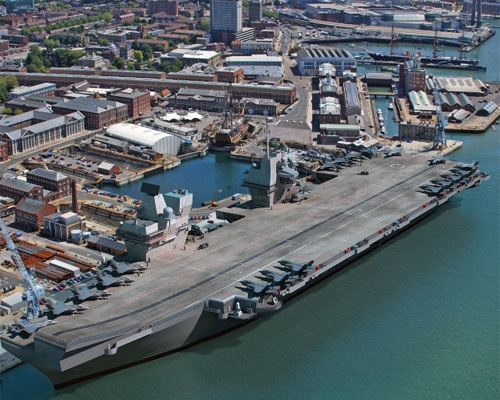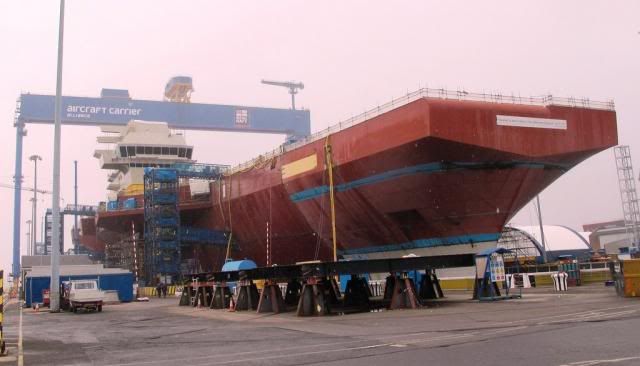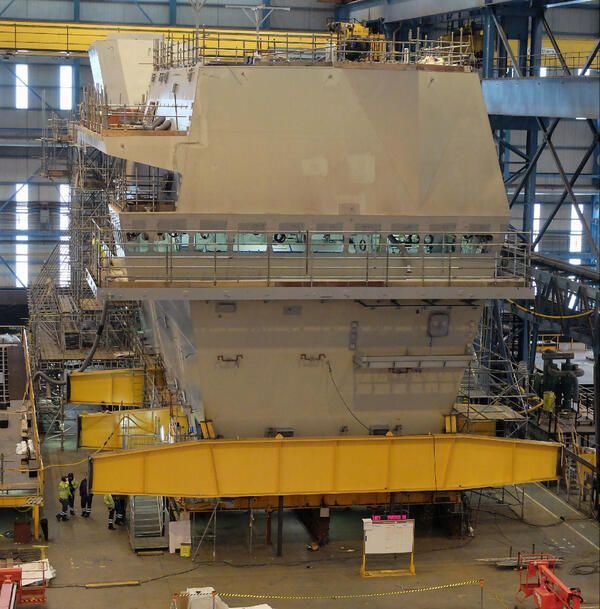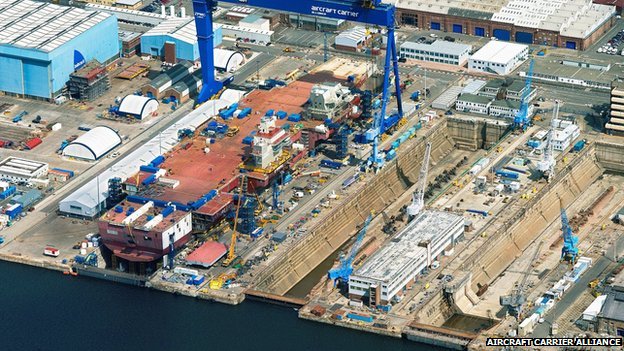- Reaction score
- 0
- Points
- 360
Slowly but surely.
DATE:24/11/08
SOURCE:Flight International

UK prepares for carrier operations with JSF
By Craig Hoyle
The UK is making significant advances in its preparations for carrierborne operations with the Lockheed Martin F-35 Joint Strike Fighter, and expects to sign a contract by late February to acquire three aircraft to support test and evaluation of the type.
Partners to the US-led JSF project have until 28 February to commit funds to buy aircraft for use by a joint test team during initial operational test and evaluation (IOT&E) activities, with the Netherlands and the UK expected to acquire low-rate initial production examples.
The UK government is due to make a decision on its IOT&E investment before year-end, and should sign for its three aircraft (F-35A model pictured below, aboard HMS Illustrious) in January, say senior military officials.
Describing test and evaluation of the short take-off and vertical landing F-35B, the UK's selection for its Joint Combat Aircraft (JCA) requirement, as "a key stepping stone", Rear Adm Simon Charlier, the Royal Navy's chief of staff for aviation, says the aircraft is the only candidate capable of meeting UK requirements.
"We want a fifth-generation aircraft it would be foolish to spend our money on anything else," says Charlier. "There isn't any other product on the market that can deliver within the parameters that we want." Key attributes include the aircraft's stealth performance and its integral intelligence, surveillance, target acquisition and reconnaissance capabilities, he adds.
"We have laid out a set of parameters and requirements. The aircraft at the moment is meeting those, and is on time," says Charlier. "While it continues on track we will continue to be committed to it."
To be assigned to Royal Air Force and RN squadrons as a replacement for the BAE Systems Harrier GR9/9A, the JCA will provide the strike force for the navy's two future aircraft carriers (CVF), the first steel for which will be cut in early 2009. With a displacement of 65,000t, each CVF vessel will be capable of deploying an air wing of up to 40 aircraft, including 36 JCA.
Eurofighter programme officials have recently hinted at possible UK interest in a marinised variant of the RAF's Typhoon multirole strike aircraft, but Air Cdre Mark Green, JCA team leader for the UK Defence�Equipment and Support organisation, notes: "We know how to do STOVL operations in the UK." However, he adds that the UK's commitment to the F-35B "will not be set in stone until we buy fleet aircraft".
Preparations for UK operations of the CVF/JCA combination are moving fast, with the RN's 22,500t carrier HMS�Illustrious now hosting advanced trials of Qinetiq's VAAC Harrier testbed. The aircraft is testing a shipborne rolling vertical landing technique, being considered by the UK to boost the bring-back capabilities of its F-35Bs. This work, conducted in addition to extensive simulator-based trials, is expected to report around March 2009.
Synthetic-based exercises using data for the CVF are also continuing at Qinetiq's Maritime Integration Support Centre (MISC) in Portsmouth, Hampshire, with these intended to prove future concepts of operation and de-risk carrier design activities. The vessels - the HMS Queen Elizabeth and HMS Prince of Wales - will enter service in 2014 and 2016, respectively.
An 11-day visualisation and experimentation exercise concluded at the MISC on 13 November. This tested the CVF's ability to sustain JCA operations in a simulated campaign to prevent conflict between two rival nations. Between eight and 12 aircraft sorties were performed each day, using real F-35 programme software. Smaller-scale events have been conducted since mid-2005.
The MISC housed a representative flying control room (below) to manage the movement of aircraft, with additional elements including air traffic control. Some 23 uniformed personnel supported the exercise, along with up to 60 engineers from BAE Systems Insyte, Qinetiq and over 20 small and medium-sized enterprises.

"We need to get people in front of the equipment that they will actually use to see how that information flows around," says Cdr Simon Petitt, carrier mission system lead for the Ministry of Defence. "We can de-risk applications by trialling early, and the concept of operations is maturing," he adds.
"Our goal was to validate the CVF's ability to support JCA operations," says Peter Craig, mission system visualisation experimentation lead for the Aircraft Carrier Alliance. While a full analysis will take several months, he comments: "The objectives we set ourselves have been achieved."
Continued work at the MISC next year will include increased emphasis on mission preparation and planning activities, says Petitt. This will include assessing bandwidth requirements for retrieving ISTAR and logistics data from an F-35B before it returns from a sortie. "The key is to get the information from the aircraft, and at a time of high workload for the pilot," he says.
http://www.flightglobal.c...-operations-with-jsf.html












